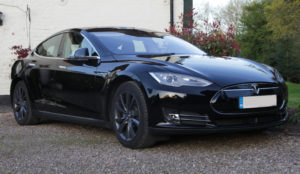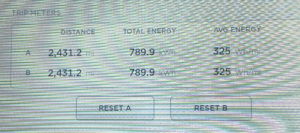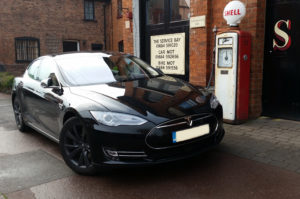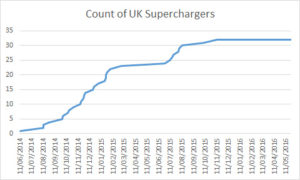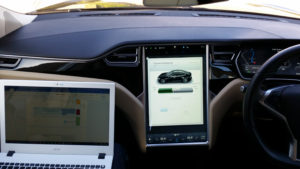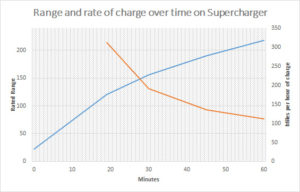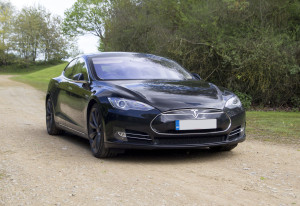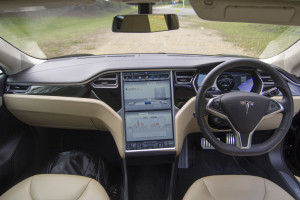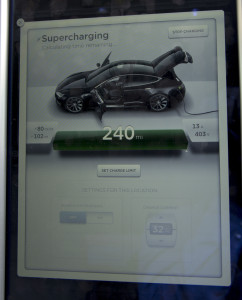Autopilot
On the whole, Autopilot is amazing. I have used it as often as possible including circumstances where I previously hadn’t expected it to be useful.
For cruising along a quiet motorway it reduces fatigue by allowing the vehicle to handle the speed and line maintenance while your concentration is on other road users and journey planning.
On busy motorways the autopilot will constantly monitor the traffic around you and be ready to react to any and all hazards by having constant 360 degree vision. This is something the human simply cannot do.
On todays managed motorways, simply set and forget. You will not miss a speed limit change because you were watching the car behind you, let the Tesla do that and you adjust the cruise control speed to match the posted limit.
In stop start traffic on the motorway (or A-road) the level of frustration is greatly reduced as Tesla takes over and simply follows the car in front. The only caveat to that is Tesla is a mimicker. If the car in front is an idiot and accelerates hard then brakes hard rather than progressively then Tesla will copy. Increasing the distance to the car in front (set in car lengths by rotating the cruise stalk) can help but unfortunately this is where the follow feature is let down compared to the human who can see beyond the car in front. Likewise if the car in front fails to spot a queue ahead, when they brake heavy Tesla will react and you should be prepared to be thrown forward against your seatbelt.
On delivery of the car there was a software update to download OTA. Part of this update was an improvement to the autopilot in which it “will give greater clearance to adjacent moving vehicles than to fixed objects (e.g., barriers)”. However, It *feels* like when you overtake a truck that it prefers to be closer to the truck than the white line on the Drivers side which is the opposite of the release notes.
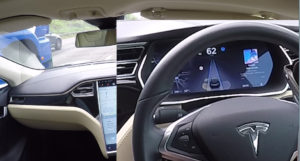
It could be complete rubbish and that it’s just tracking true where the natural tendency of a human driver would be to use the width of the lane to put distance between Tesla and truck but it does feel like you’re being sucked towards a big dangerous truck. I’ve got some
on-board video that should allow me to work out if this is the case or not.
<edit> On reviewing the footage it looks like Tesla sticks to the middle of the lane, therefore it’s purely a driver and passenger perception that it is getting closer to the overtaken vehicle
Lane changing. In an earlier version of Autopilot I felt that lane changing was quite severe. More of a swerve than a gradual drift. This has been addressed, though I still think it’s too severe but there is an issue that the vehicle will tend to move to the far side of the lane it is entering before recovering to the centre of the lane. Again, this isn’t much of an issue but if you’re moving from lane 3 to lane 2 on the motorway while a truck (or any vehicle really) is in lane 1, it does feel like you’re going to drive straight into the vehicle in lane 1. It never happens but again it’s just feel when compared to a human driver.
In roadworks where the lanes are narrow, autopilot can be a real advantage. The cognitive load of trying to keep a wide vehicle in the narrower lanes is removed and you’re free to concentrate on the other dangers. Or, in slower traffic, worrying less about the journey and watching your fellow motorists become increasingly frustrated. The only observation, one that
Emily made me aware of, is that our current tendency in the UK to have the hard shoulder closed off with metal barriers in roadworks does mean that the Tesla tends to wander left to right if you’re in lane 1 as it struggles to maintain a consistent middle between the white line and the intermittent metal barrier. It’s never an issue as such, it just leads to a somewhat less smooth journey. Stick to lane 2 or 3 and all is good.
Coming up behind slow moving vehicles. The long range radar is very good at not only spotting vehicles ahead but also their relative speed. There is a clear difference between coming up behind a vehicle doing 65mph and one doing 56mph. This makes sense as the vehicle will react earlier and reduce speed quicker when coming up behind a truck. The issue is that it’s unnaturally risk averse and several times I have been planning a lane change and the Tesla has slowed significantly preventing me from making a smooth change. At the same time, if the vehicle ahead is moving slow, when you initiate an autopilot lane change to overtake the Tesla’s built in acceleration can be caught out and it accelerates, brakes and then re-accelerates. Something that could be engineered in to prevent.
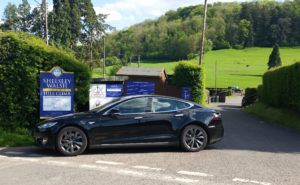
Ignoring SatNav. Do this at your peril if using cruise control. There is a built in routine that will slow the vehicle down when exiting a motorway ramp. It knows you’re doing this because the sat nav is linked in and telling you to exit to follow the route. If you decide to ignore the sat nav, and let’s face it who doesn’t know better than the sat nav? then as you pass the exit ramp end point the Tesla will start to slow, even though you’re still on the main carriageway. This could be dangerous. It tends to only happen for a brief second until the sat nav has reacted to your journey change and you’re then accelerating back to cruising speed. Obviously, the faster you’re going when this occurs, the more it will brake and longer it will take to react.
Parked cars. One way in which the Tesla has made the commuting traffic easier is by using Autopilot in slow moving stop start traffic. Be this on the motorway or A-roads. However, if used on A-roads, beware of parked cars. Tesla will happily follow the car in front (cruise or cruise and steer enabled) but if the car in front moves over to pass a parked car, Tesla will see that as the vehicle ahead changing lanes and the parked car now becoming the one you are following. It will therefore apply the brakes to come to a rest either behind (autosteer) or diagonally to (cruise) the parked car. Just something to be aware of. I’m not sure how you would get around this as it is logically the correct course of action.
The App,
Like quite a few other vehicles on the market now, there is a mobile phone app to support various functions.
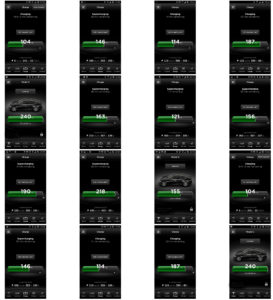
The app allows you to see the state of battery both static and while charging. Unlock and even start the car as well as vent the roof. It also allows you to flash the lights, useful to find the car in a car park and honk the horn, useful for, well, childish things I need not go into. You can adjust the charge limit (the point of charge at which charging will automatically stop and against which the estimated time remaining is calculated). You can also turn on the climate control and set the target temp. This is very useful in warm or cold weather. There is an automatic pre-conditioning feature built in to the Tesla that learns your regular patterns and tries to have the car climate ready for you. The remote turn on is a quick override and will allow you to rapidly cool or heat the car before you get to it. Oddly, the ability to turn on rear screen heater or front de-misters is not in the app but is available in the API that the app uses. It would also be useful to manually schedule the climate control. Again, something that is possible but not offered. Should you forget where your car is parked the app also allows you to locate and navigate to it. The App will now also allow you to ‘Summon’ your car to and from a parking space or garage. I took
this video as demonstration, it also shows the perpendicular parking feature
Size.
The Model S is deceptively large. In car parks it’s hard to lose it as the nose will normally be stuck out from the line of other Euro-boxes. It’s wide too and when you’re parked between two other cars it can be a struggle to get in and out (and you worry about door dings). It does seat 4 adults very comfortably and with the flat floor a fifth adult should be equally accommodated.
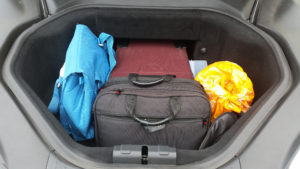
The luggage capacity is really impressive. It’s about the same as an e-class Mercedes Estate. The Frunk and additional rear under floor storage means that your day to day stuff is not using the main luggage space. The small suitcase I use for my week away with work fits easily in the frunk.
Back to the width, single track roads, canal bridges and narrow lane roadworks do need careful progress but it’s not intimidating and with the array of sensors it’s not hard to place the car away from hazards.
Niggles (and some potential fixes ):
The lighting in the Frunk and boot is woeful, Small LED lights that do not illuminate enough for me to see.
The interior design is an effort to de-clutter. I applaud this but the lack of a centre cubby or door pockets means that nothing can really be left in the car when it’s parked as it just ends up in the centre of the yacht floor and on display
As a business traveller, no coat hooks means my shirts and/or jacket have nowhere to hang
No 12v socket in the Frunk or boot. Nowhere to plug in a cool box or to run an inverter
Turning circle. I’m not sure why this is but the lock to lock on the front is quite small and makes the turning circle unnecessarily large. Now they have a dual motor I wonder if this was always going to be a driving factor. The rear-wheel drive versions, to my mind. should’ve had a greater steering lock designed in.
That beep. It’s a really small thing but the beep that issues from the tailgate when you press the close button is a) loud and b) quite harsh sounding. In a quiet cul-de-sac late at night when the car has really been brilliant at sneaking in at the end of a long trip I feel almost guilty about closing the boot in case it wakes someone up.
When listening to an audio-book over Bluetooth there must be some sort of Gracenote lookup going on for album art as, for instance, when listening to Chapter 18 of Into the Black I got this as the Album Art
Faults and Failures:
Sun roof stuck open on a particularly hot day. A quick phone call to the service team at Tesla and they pushed an OTA reset command. This didn’t initially work but after parking, locking and unlocking the vehicle some ten minutes later all came back to life (This was in a patchy 3G area so it could be that the remote command took time to get through)
Spotify crashed once to the point that nothing else would play and I had to reboot the main control unit. On other occasions I’ve had MP3 playback stutter and cause the right hand side of the main dashboard appear to restart and the main control unit run slowly
Other useful things: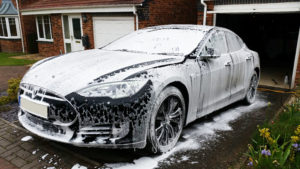
The Frunk is quite well sealed and as such, putting shopping in there actually keeps it quite cool during a journey back from the supermarket (see niggle above though)
Finally, due to the aerodynamic design, it’s a pleasure to hand wash







